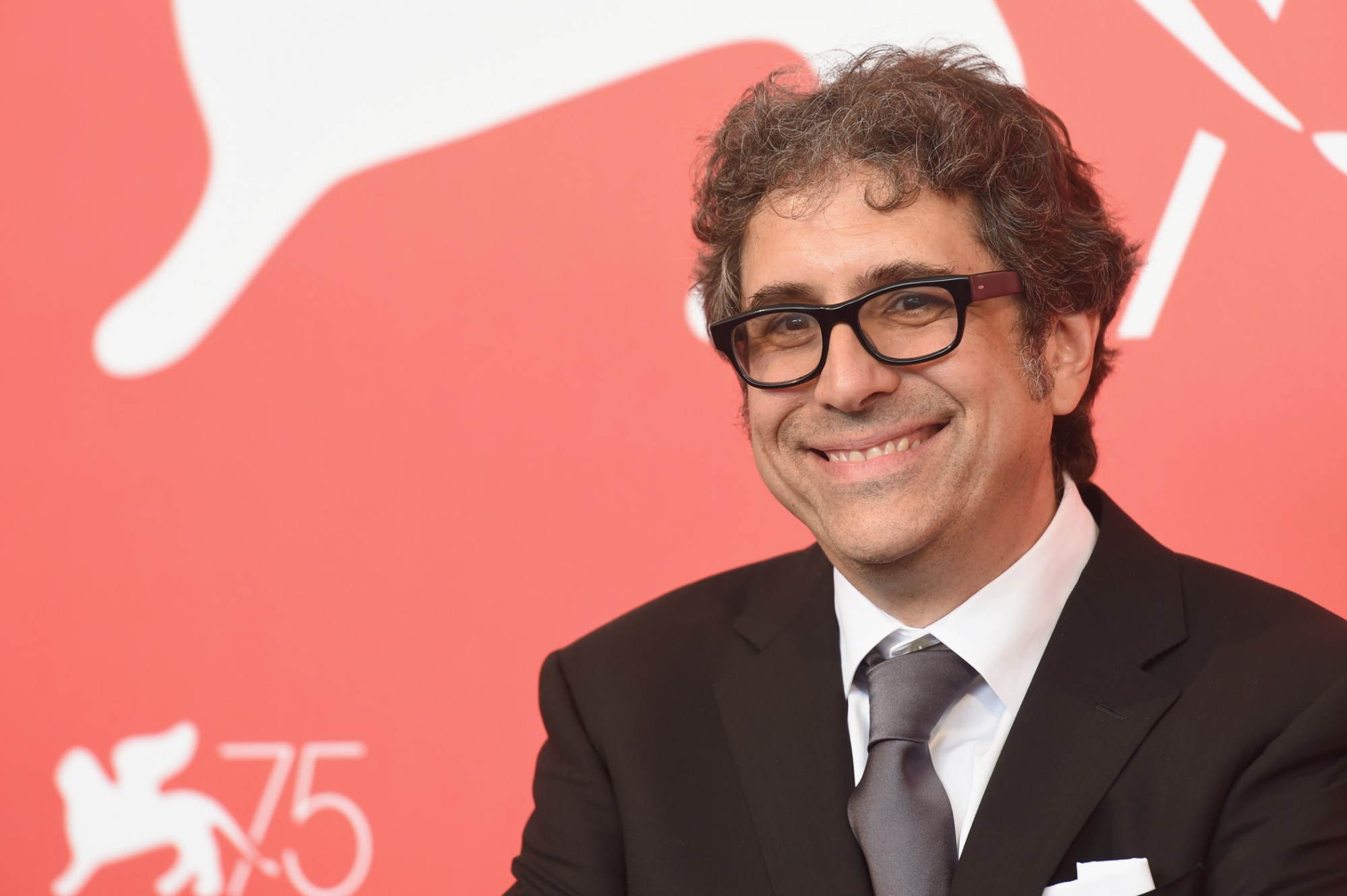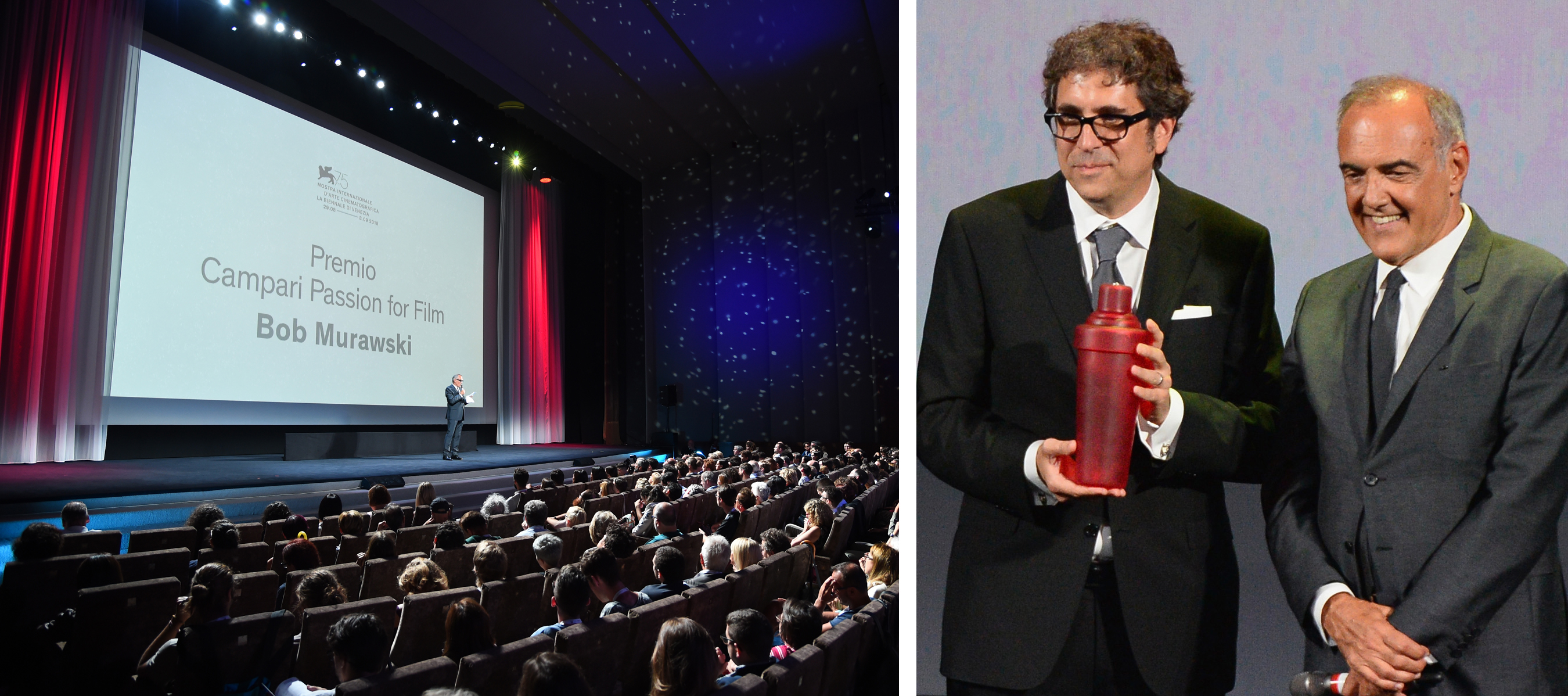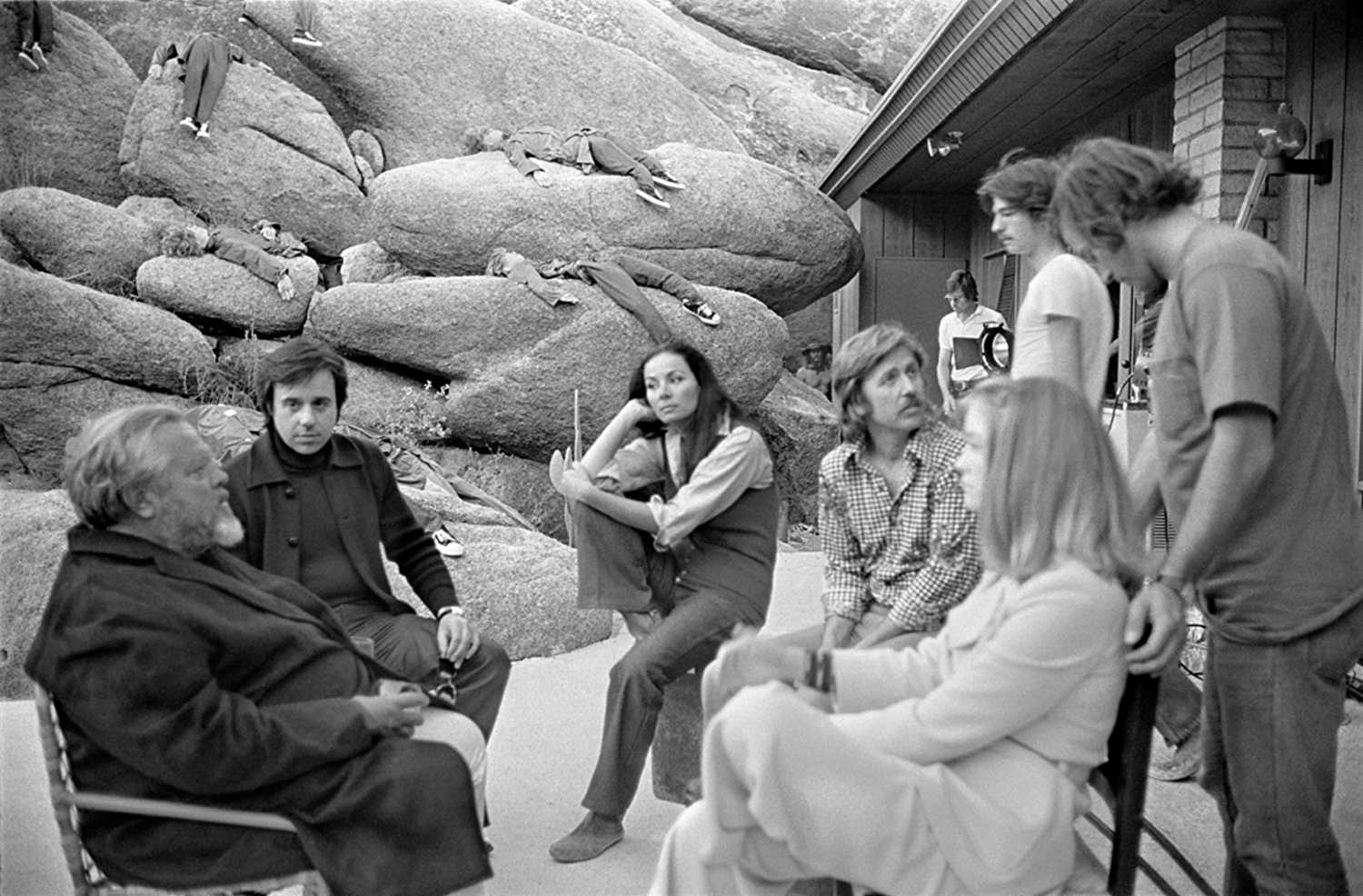
- Festivals
“The Other Side of the Wind” – Orson Welles’ Final Legacy
Film festivals can sometimes be magical playgrounds for cinephiles. Just in the first couple of days in Venice screenings included crowd pleasing love stories like A Star Is Born, a lyrical black and white autobiography like Roma, a smart period palace intrigue like Favourite from Yorgos Lanthimos and a psycho-political meta horror from Luca Guadagnino: Suspiria. All this plus world cinema and impenetrable art house movies – as well as, of course, the occasional dud. It Is not every day however that any festival can boast a premiere of a “new” Orson Welles film which is exactly what The Other Side of the Wind is. Culled form over 100 hours of unfinished footage by editor Bob Murawski and Welles own daughter Beatrice for Netflix, with the executive production of Peter Bogdanovich, Wind is surely destined to remain as this editions most singular artifact and subject of heated aperitivo conversation.

Bob Murawski recevies the Campari Passion for Film Award from director of the festival Alberto Barbera prior to the Screening of The Netflix Film The Other Side Of The Wind during the 75th Venice Film Festival.
getty images
The film is a thinly veiled autobiographical tale of an aging director, Jake Hannaford (played by real life helmer John Huston) trying to salvage his latest picture by throwing a fund-raising birthday party. A multicolored group of young film makers are invited to his canyon hideaway for a screening of the film and all are invited to bring along their 8mm and 16mm cameras. An initial voice over by Bogdanovich informs us that we are about to witness the resulting record of Hannaford’s last night before the fatal car crash which ends his career. The resulting patchwork of color and black and white film of different grain, with the characteristically intermixed sound, cannot but recall Citizen Kane as it purports to reconstruct the life of a presumptively “Great Man” (who this time is present) from the testimony of witnesses. But it is also clearly the work of a man who has seen Fellini’s 8 ½: a great experimenter contemplating the new directions in film which he himself had foreshadowed.
And that is really the point of this incredible time-capsule from one of cinema’s greats but also greatly tragic figures in the way his artistic career was truncated by ostracism. Hannaford/Huston is a stand-in for Welles but really for the generation of adventurer-directors to which both Huston and Welles belonged. Which is why the rage of the waning fictional director feels so authentic. It is the bitterness of the maverick directors who had been the iconoclasts of a previous generation, shooting films and living hard in exotic locations throughout the world and were then being displaced by the “easy riders and raging bulls” of the American New Wave and European directors like Bertolucci and Antonioni (both called out by name) who were staking new creative terrain. It is not by accident,t presumably, that for film-within-the film that Hannaford screens for his guests, Welles shot an outlandish parody which has rightly been called “a Russ Meyer version of Zabriskie Point”.
The Other Side of the Wind was to have been Welles’ comeback film when he returned to the States after a year’s long European exile, but it became embroiled in legal quandaries which halted production and ensured it would remain unfinished as Welles decline hastened. It sees the light posthumously thanks to the auspices of Netflix. An unfinished film about an unfinished film and about the frustrations of art and film and the inevitable passing of an era … Could there really be a better final legacy from Orson Welles?

As the voiceover trailing over the film’s final images wistfully states: “We travelled the world and shot pretty pictures … we shot them all dead”.

